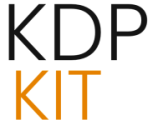BookTok Trend Strategy: Operationalizing Roleplay, Sounds, and UGC at Scale

The BookTok community represents a dominant and high-leverage channel in the contemporary publishing and entertainment landscape. As of late 2025, the platform continues to be a primary driver of book discovery and sales, with projections indicating that the influencer marketing sector it fuels is interwoven with a market expected to reach $22.2 billion in 2025. A successful BookTok strategy now moves beyond simple paid posts; it demands a highly operationalized system that merges performative creativity with algorithmic precision. This strategy is built upon three core pillars: scaling roleplay and narrative mimicry, leveraging sonic architecture for distribution, and mobilizing authentic user-generated content (UGC) at volume. The modern marketer must transition from executing isolated tactics to engineering a seamless, self-optimizing content loop.
Pillar One: Operationalizing Roleplay and Narrative Mimicry at Scale
Roleplay serves as the performative core of BookTok trends, converting the private act of reading into public, shareable dramatic vignettes. To achieve scalability, this performance engine cannot rely on ad-hoc improvisation from every creator; it requires a structured yet flexible framework. This approach ensures that hundreds of diverse creators can interpret a campaign’s emotional core while maintaining algorithmic favorability through structural consistency.
Developing Modular Trend Scripts for Mass Deployment
Scaling roleplay necessitates breaking the overarching campaign theme into a series of highly adaptable, modular script components. These modules are designed to represent the essential narrative tension or comedic beat of the trend, allowing for easy integration into any creator’s unique environment. The skeletal structure is key: marketers provide the necessary scaffolding while preserving the room for individual creator voice, which is critical for sustained algorithmic visibility.
- Beat One: The Introduction of Conflict: This module sets the stage, often using a universally relatable micro-frustration (e.g., looking overwhelmed at a to-be-read pile).
- Beat Two: The Introduction of the Solution: This module pivots to the product—the book—signaling the moment of discovery or realization.
- Beat Three: The Emotional Payoff: This concludes the micro-narrative with an exaggerated, high-engagement reaction (e.g., a gasp, a teary-eyed nod, or a slow, knowing smile).
The Art of Contextual Prompting Over Directive Copy
The briefing process for these modular scripts must pivot away from rigid, scripted dialogue toward evocative, contextual prompting. Creators thrive when they are given an emotional mandate rather than a line to recite. The language must articulate the *feeling* required for the algorithm to categorize the content correctly and for the audience to relate genuinely. This approach is essential for content that is perceived as authentic and native to the platform’s flow.
Instead of: “Say this line verbatim in Beat Two.”
The Brief Should Articulate: “In Beat Two, channel the specific feeling of finally grasping a complex idea after prolonged effort, then immediately pivot that intense focus into quiet, eager anticipation for the book’s opening chapter. Your performance should reflect internal revelation.”
By empowering creators to use their authentic vocabulary and mannerisms to deliver the required narrative beats, the content’s genuineness is significantly increased.
Implementing Trend Velocity Checks for Iteration
The pace of BookTok requires a marketing cycle that mirrors the speed of organic trends, making real-time monitoring non-negotiable. Marketers must implement systems for instant trend velocity checking across deployed content. The insights gathered—specifically, which scripted beats or novel interpretations are spiking in engagement—must be fed back into the briefing pipeline immediately.
If a creator’s spontaneous deviation from the initial brief unexpectedly generates high organic reach, that deviation instantly becomes the new tactical mandate for the next deployment wave. This demonstrates an agile, reactive marketing cycle that rewards responsiveness over rigid adherence to the original plan, a core requirement in the dynamic 2025 social ecosystem.
Pillar Two: Sonic Architecture as the Algorithmic Targeting Layer
In the current social media ecosystem, trending audio is not merely background music; it functions as a rich, metadata-laden targeting mechanism. The TikTok algorithm heavily utilizes sound metadata to cluster and distribute content to highly specific, primed micro-audiences. For book campaigns, the strategic selection of the correct, emerging sound is arguably the single most crucial factor ensuring the content lands in front of users already predisposed to book-related engagement.
Identifying High-Velocity, Subculture-Specific Audio
The search for sound must prioritize audios displaying high engagement velocity specifically within the BookTok cluster, rather than chasing sounds with the highest overall platform volume. This requires leveraging advanced analytics—or rigorous manual curation—to track sounds rapidly gaining traction among creators discussing similar genres or emotional states. A sound trending in a broad comedy niche, despite high volume, is a poor distribution amplifier for a romantic novel promotion if it lacks the requisite emotional metadata tags for the book community.
Data from 2025 confirms that using trending sounds can nearly double a video’s views. Therefore, identifying the correct sound is an algorithmic entry strategy, often relying on tools that track regional trends or even native AI assistants like the TikTok Symphony Assistant to source relevant themes.
Crafting Sound-Aware Briefs with Tonal Context
Once a high-velocity sound is selected, the creator brief must explicitly map the expected tonal execution to that audio. This involves contextualizing the sound’s existing community usage. Simply stating the sound to use is insufficient.
Example Contextual Briefing: “This audio clip is currently trending within BookTok to signify a sudden, overwhelming romantic realization or betrayal. Ensure your visual performance mirrors that auditory expectation, perhaps utilizing a sharp visual pause or a specific facial expression just before the final reveal to align with the audience’s anticipated narrative response.”
This alignment ensures the visual performance perfectly matches the auditory expectation set by both the algorithm and the engaged audience.
The Strategy of Sonic Layering and Cross-Platform Adaptation
A sophisticated operational approach involves sonic layering: utilizing the primary, high-velocity trending sound to secure algorithmic entry, but subtly weaving in secondary, more niche audio clips or voiceovers to deepen narrative specificity. This hybridization allows brands to play the algorithmic game while delivering bespoke storytelling.
Furthermore, successful campaigns recognize the need for cross-platform adaptation. While a sound may be king on TikTok, repurposing the core narrative structure for platforms like Instagram Reels or YouTube Shorts requires adapting the sonic strategy to those platforms’ respective trend cycles. The core story must be portable, even if the soundtrack requires a context-specific pivot.
Pillar Three: Operationalizing User-Generated Content Mobilization at Scale
The defining characteristic of scalable BookTok strategy in 2025 is the systematic mobilization of a vast volume of credible UGC, shifting the dependency away from relying solely on a few high-tier influencers. This mobilization must be engineered to drastically lower the barrier to participation while simultaneously maximizing content authenticity and overall volume. Brands are effectively facilitating a community-driven content creation event, capitalizing on the finding that 83% of TikTok users find brands more authentic when they feature UGC.
Designing Frictionless UGC Pathways and Incentive Structures
To achieve mass scale, both the technical and motivational friction for participation must be near zero. This means providing tangible resources and a clear motivational ladder.
- Technical Facilitation: Providing easily accessible, perhaps downloadable, templates for the modular scripts, pre-approved and easily discoverable campaign hashtags, and clear instructions on audio syncing.
- Incentive Structures: Incentives that drive scale often work best when they are community-focused rather than purely transactional. Pure monetary payment can risk devaluing the perception of authenticity. Tiered, non-monetary rewards are highly effective: featuring top submissions on an official brand channel, offering exclusive early access to unreleased content or merchandise, or creating “Creator Spotlight” segments.
Leveraging Creative Challenges for Mass Content Ingestion
The integration of platform-native features, such as Creative Challenges, is invaluable for rapid content ingestion. By framing the entire campaign around a titled challenge with a simple, clear deliverable—for example, “Show Us Your 3-Second Reaction to the Book’s Most Shocking Moment”—brands harness the platform’s inherent gamification. This crowdsourcing mechanism transforms the audience into a distributed, highly diverse content production team capable of generating thousands of platform-native assets rapidly.
The Authenticity Filter: Curation Over Control in UGC Vetting
Scaling UGC necessitates a vetting process that is both robust enough to maintain quality and swift enough to capitalize on fleeting trends. The paramount focus in this vetting process must be on capturing the spirit of the campaign’s emotional prompt, prioritizing authenticity over absolute, frame-by-frame brand compliance.
Systems must be established for the rapid assessment of UGC pieces possessing the highest engagement potential—specifically watch time, shares, and comment sentiment. The most successful pieces are then strategically amplified through paid boosting or prominent feature placements, effectively turning organic success into amplified, scalable reach, which aligns with case studies seen in 2024-2025.
The Integrated Campaign Architecture: Merging Elements into a Cohesive System
A truly successful BookTok strategy demands the seamless integration of the three pillars—roleplay mandates, sound selection, and UGC mobilization—into a single, fluid operational architecture. The entire system must be designed for iterative learning, where the real-time data from one pillar immediately informs the execution of the others, creating a self-optimizing content loop.
Establishing the Content Command Center for Trend Synthesis
Brands must establish a centralized “Content Command Center”—a dedicated function or team responsible for the daily synthesis of real-time data across all three pillars. This center actively monitors sound velocity, roleplay interpretation success rates, and UGC engagement metrics simultaneously. Its primary function is not content creation, but synthesis: translating complex data points like “Sound X is peaking” and “Roleplay Beat Y is underperforming” into unified, actionable adjustments for the next batch of creator briefs and UGC prompts.
Building Feedback Loops Between Creator Tiers
Effective scaling in 2025 relies on a structured hierarchy of creator engagement, moving from small-scale testing to mass mobilization based on validated insights. Initial campaign testing should be conducted with a small cohort of highly trusted, mid-tier creators who possess acute community fluency. Their initial roleplay interpretations and sound choices are rigorously analyzed to determine which elements resonate most effectively.
The successful, community-vetted creative decisions derived from this initial test are then immediately codified and deployed as the core mandate for the larger, mobilized UGC efforts. This tiered feedback loop ensures that the content executed at massive scale is built upon a foundation of proven, community-vetted creative direction, mitigating the risk inherent in wide-scale deployment.
Creator Ecosystem Management: Building Bridges, Not Just Transactions
BookTok’s success is fundamentally rooted in genuine affinity and cultural gatekeeping. Any scalable strategy that treats creators merely as distribution points, neglecting their role as community leaders, is structurally unsound for long-term viability. Successful operationalization hinges on building enduring relationships that actively value creative autonomy and deep community respect.
Vetting for Subcultural Fluency Over Follower Count
When expanding creator outreach, the vetting process must place a significant weighting on subcultural fluency—demonstrated knowledge of specific BookTok tropes, deep familiarity with genre conventions (e.g., Romantasy vs. Thriller pacing), and genuine emotional investment in the subject matter.
A creator with a smaller, hyper-engaged following but acute fluency holds exponentially more value than a generic lifestyle influencer attempting to force a book review into an unrelated feed. In 2025, the strength of a creator’s community is viewed as a better gauge of power than raw follower metrics alone.
Fostering Creative Autonomy Within Strategic Guardrails
The most critical factor in maintaining authenticity during scaled outreach is the provision of generous creative autonomy within clearly defined strategic guardrails. The brand must communicate the required emotional core and any mandatory sonic elements, but then explicitly encourage creators to interpret the roleplay and visual execution in a manner that feels entirely native to their personal brand. Overly prescriptive briefs are the quickest way to stifle the organic virality that characterizes the platform.
Guardrails must, therefore, be wide enough to permit personal creative expression, ensuring that the final content serves the creator’s community first, which in turn serves the brand’s goal of authentic reach.
Measurement and Attribution in the Community Economy
Proving Return on Investment (ROI) for campaigns rooted in cultural relevance and emotional connection presents a distinct measurement challenge in 2025. Traditional direct-response metrics often fail to capture the long-term value generated by enhanced brand affinity, sustained cultural relevance, and the creation of cultural demand.
Tracking Narrative Velocity and Sentiment Shift
Measurement protocols must expand beyond standard engagement rates (likes, comments, shares) to incorporate metrics for narrative velocity and nuanced community sentiment shift. Narrative velocity tracks the speed at which a campaign’s core theme or associated sound moves from initial paid creator adoption to organic, unprompted user participation.
Sentiment analysis must move past simple positive/negative scoring to track alignment with the desired brand perception. Marketers must ask: Are users commenting about the *feeling* the book evokes (successful roleplay resonance), or are they only commenting about the *sound* itself (successful sonic targeting)? Both indicate success, but in different dimensions.
Modeling Attribution for Long-Tail Awareness and Consideration
The impact of BookTok campaigns is frequently realized in sustained consideration and long-tail sales, not immediate, last-click conversion. Attribution modeling must account for this delay. The most sophisticated strategies in 2025 correlate campaign exposure peaks with subsequent sustained search volume spikes or shifts in overall genre popularity, rather than relying solely on last-click models, which are increasingly inaccurate due to platform fluidity and privacy changes.
Industry experts and research highlight that last-touch attribution fails to credit the initial discovery or trust-building phases that social platforms like TikTok initiate. Therefore, the focus must shift toward Data-Driven Attribution (DDA) or advanced multi-touch models, which leverage machine learning to assign credit based on a customer’s real, observed journey across multiple touchpoints, accurately measuring the creation of cultural demand as a leading indicator of future sales success.
Future-Proofing the Strategy: Anticipating Algorithmic and Cultural Shifts
The BookTok ecosystem is defined by relentless evolution. Any operational strategy deployed in 2025 must inherently include mechanisms designed to anticipate and adapt to inevitable shifts in platform algorithms and community aesthetics.
The Constant Audit of Platform Feature Adoption
A vital component of strategic sustainability is the continuous, proactive audit of new platform features. This includes monitoring evolving video formats, new creator monetization tools, and any changes to the recommendation engine’s weighting of specific engagement signals (e.g., a shift toward longer video completion rates or comment thread activity). Marketers must be prepared to swiftly pivot roleplay scripts or UGC prompts to align with any new feature that the algorithm begins to favor, ensuring the campaign remains positioned at the leading edge of discoverability.
Cultivating a Reserve of Genre-Agnostic Viral Mechanics
To ensure resilience against genre fatigue—where even the most popular genres can temporarily wane—the operational framework must catalog and archive successful, genre-agnostic viral mechanics. This reserve library catalogues proven combinations of visual pacing, jump-cut timing, and emotional delivery that consistently drive high watch time and completion rates, irrespective of the book’s specific content.
This library of proven how-to-perform guides allows marketing teams to rapidly deploy a structurally sound campaign concept even when an unexpected book or genre suddenly captures the community’s attention. This accumulated operational knowledge serves as the ultimate insurance policy for achieving scalable, sustained success in the perpetually dynamic world of BookTok.






